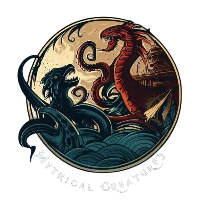Thailand has a rich mythology and folklore tradition filled with mystical creatures that originate from ancient legends and Buddhist traditions.
From mischievous ghosts to noble animal creatures, these mythical beings reveal insights into Thai culture and continue to influence art, stories, and traditions in Thailand today.
This article will provide an overview of the top 10 most popular Thai mythical creatures that inhabit Thai myths and folk tales.
We’ll explore their origins, cultural significance, and how they continue to dazzle the imagination of locals and tourists alike.
ads content
Introduction
Thai mythology intertwines with Buddhist and Hindu lore to create a diverse pantheon of magical and mystical creatures. Various animistic beliefs found in rural villages have also contributed to legends and stories featuring ghosts, spirits, and mythological animals.
Some of the most prominent mythological figures seen in Thai art and architecture include the Naga, a serpent-like creature, the Garuda, a bird-man celestial warrior, and the Singha, a powerful lion creature. Mythical female figures, like Kinnari, a half-bird woman, represent beauty and grace.
While belief in these mythical beings has declined, they continue to be cultural symbols and feature prominently in classical dance, paintings, temples, and sculpture.
Their stories remain popular today as they give insight into the values and folklore traditions of Thailand.
This article will spotlight the top 10 most iconic and popular Thai mythical creatures with details on their origins, legends, and cultural influence:
Top 10 Thai Mythical Creatures
1. Naga
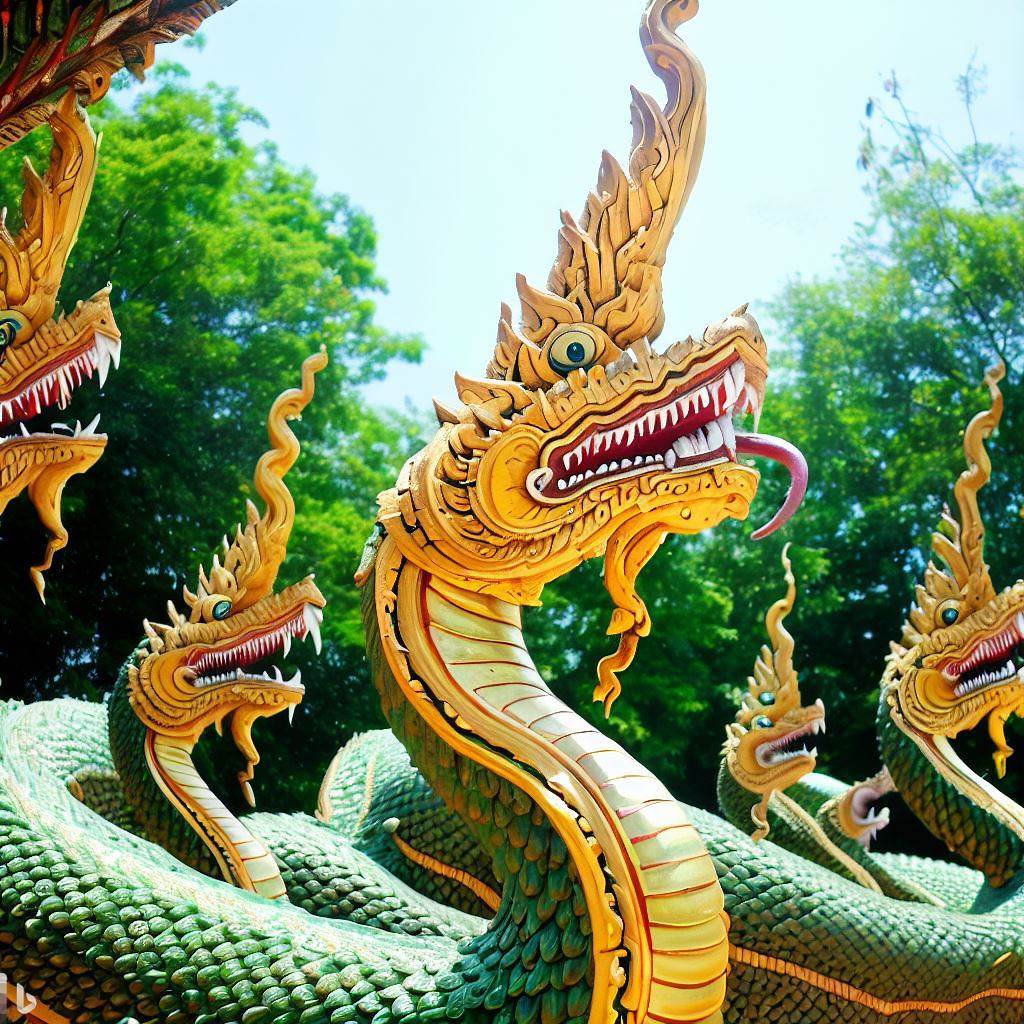
The Naga is likely the most well-known and important creature in Thai mythology. This giant serpent-like creature features prominently in Buddhist and Hindu lore. The multi-headed Naga is said to inhabit sacred waters and guard ancient temples.
In Thailand, Nagas represent water spirits and are symbols of fertility and life. Nagas appear extensively in Thai art and architecture, adorning steps and railings at Buddhist wats. Intricately carved Nagas also serve as protective beings for temples.
With its coils and multiple heads, the Naga embodies power and divinity. It is closely associated with Buddha images as a natural shelter for the enlightened teacher. As beneficent rainmakers, Nagas also control water resources, an important connection in agriculture-based Thai society.
![Top Ten Thai Mythical Creatures and Legends 2 mythical creatures art Thai Mythical Creature Naga iPhone Case [all sizes]](https://mythicalcreatures.blog/wp-content/uploads/2023/11/102546-3-1024x1024.jpg)
Thai Mythical Creature Naga iPhone Case [all sizes]
In Thai, Javanese and Balinese culture, Indonesia, a Nāga is depicted as a crowned, giant, magical serpent known as symbol of protection, your iPhone will be protected with this beautiful Naga print iPhone case, ensuring no slipping and no extra bulk in size.
2. Garuda
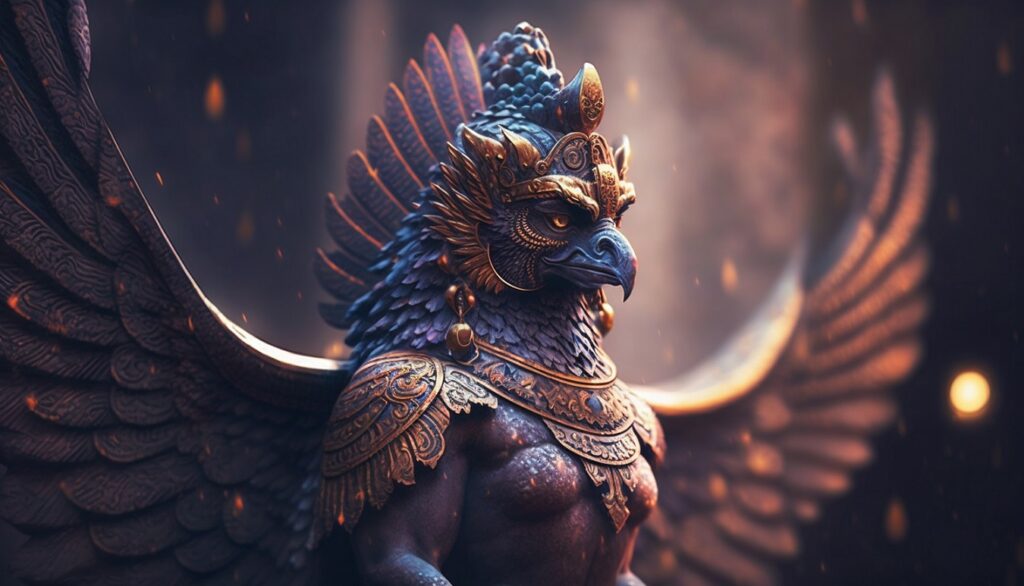
Image credits:deviantart.com
The Garuda is a mythical bird-man creature that features prominently in both Hindu and Buddhist lore. This humanoid bird creature is the fierce mount of the god Vishnu and sworn enemy of the Naga.
In Thailand, the Garuda represents royalty, strength, and divine knowledge. It is the symbol of the monarchy and often depicted on official seals, banners, and coats of arms.
The Garuda also appears in classical Thai dance, representing the rhythm and movements of ritual and ceremony.
With its fierce loyalty and warrior nature, the Garuda serves a protective function. It adorns shields, swords, and armor as a guardian symbol.
The Garuda’s golden wings are believed to shine light on the darkness of evil and ignorance.
3. Kinnari
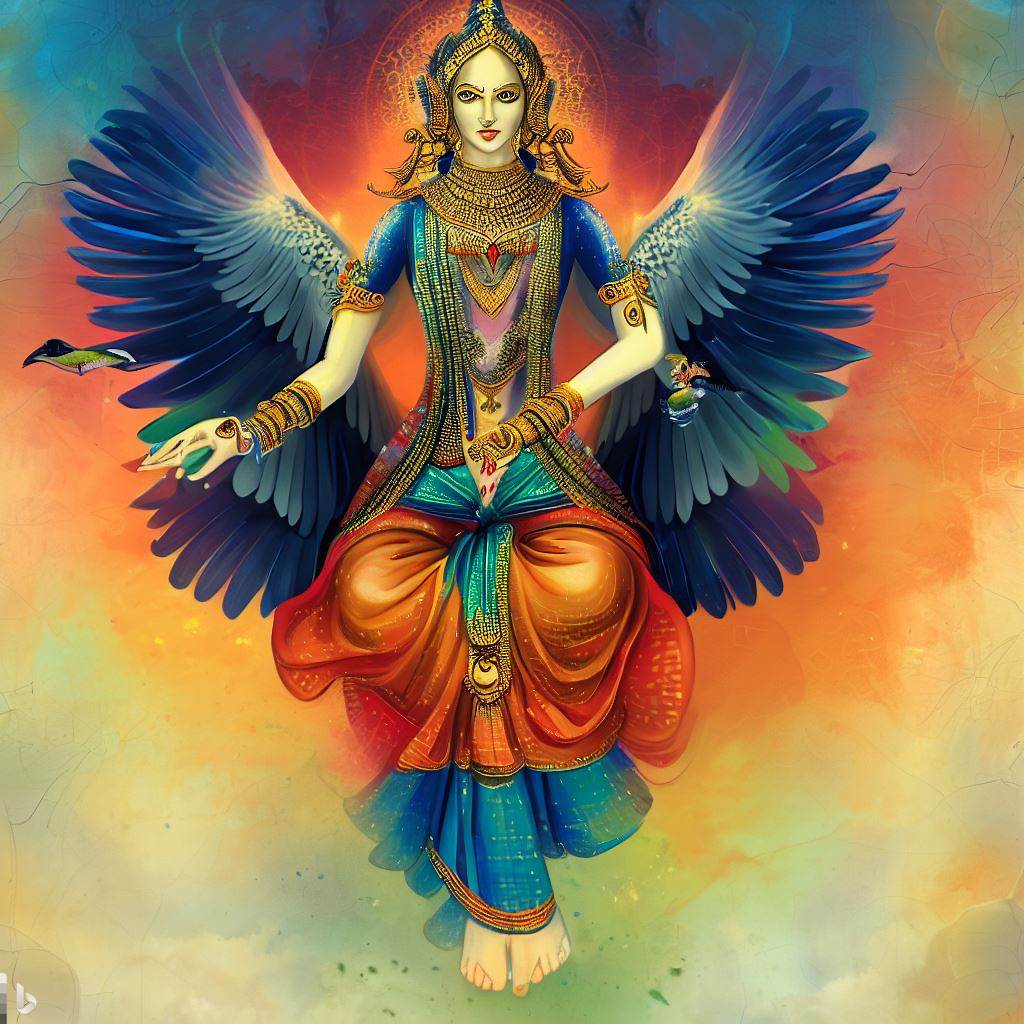
The Kinnari is a beloved mythological creature with the torso of a human female and the wings and legs of a bird. Gentle and refined, the Kinnari symbolizes beauty, music, and the arts.
Kinnaris often appear as companion figures to the Naga and male mythological figures. Their image reflects Thai cultural values of femininity, harmony, and grace.
In classical Thai dance, the Kinnari Initiation Dance represents a maiden’s passage into womanhood.
Dancers emulate the delicate elegance of the Kinnari in her half-flying dance movements. Kinnaris also feature prominently in Thai literature, song, and poetry as muses and guides.
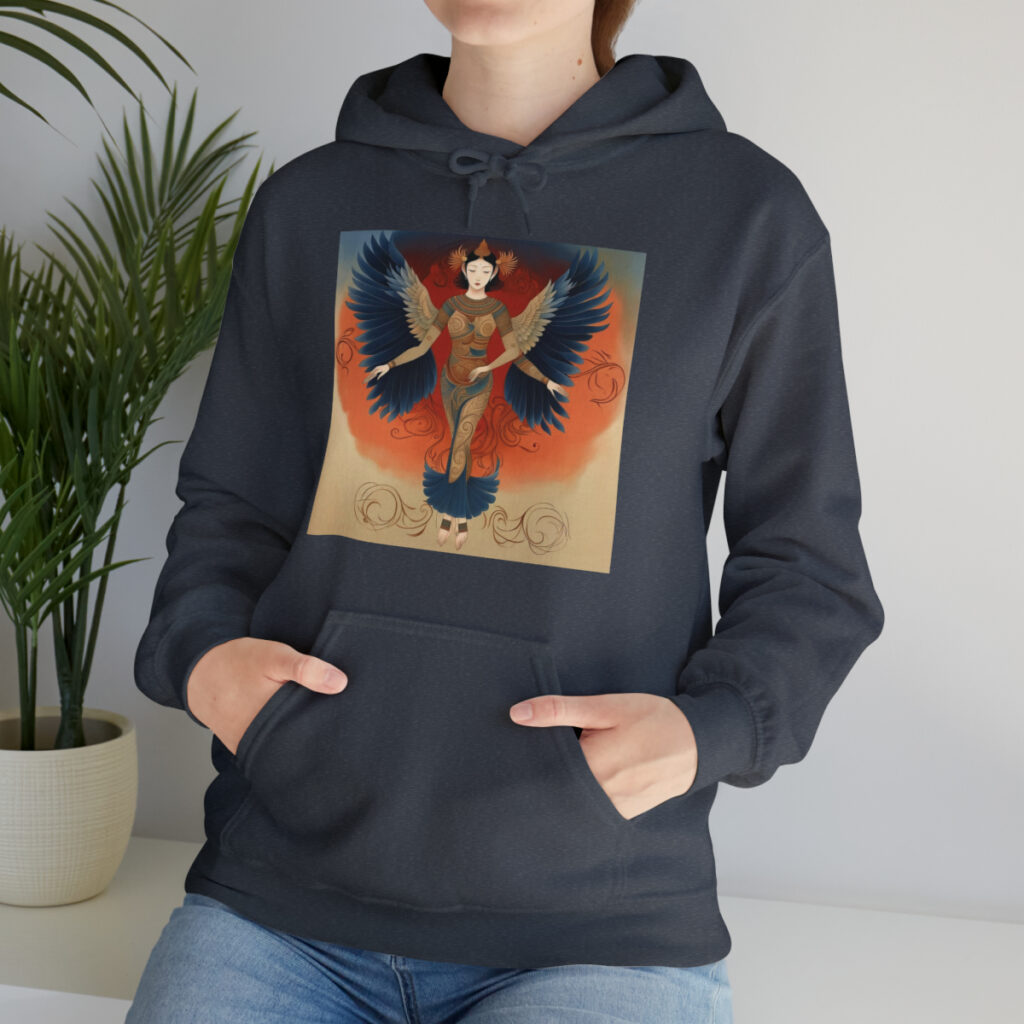
The Kinnari Thai mythological creature Hooded Sweatshirt
The Kinnari Thai Mythical Creature Hoodie is made with a thick blend of cotton and polyester, it feels plush, soft and warm, a perfect choice for any cold day.
4. Singha
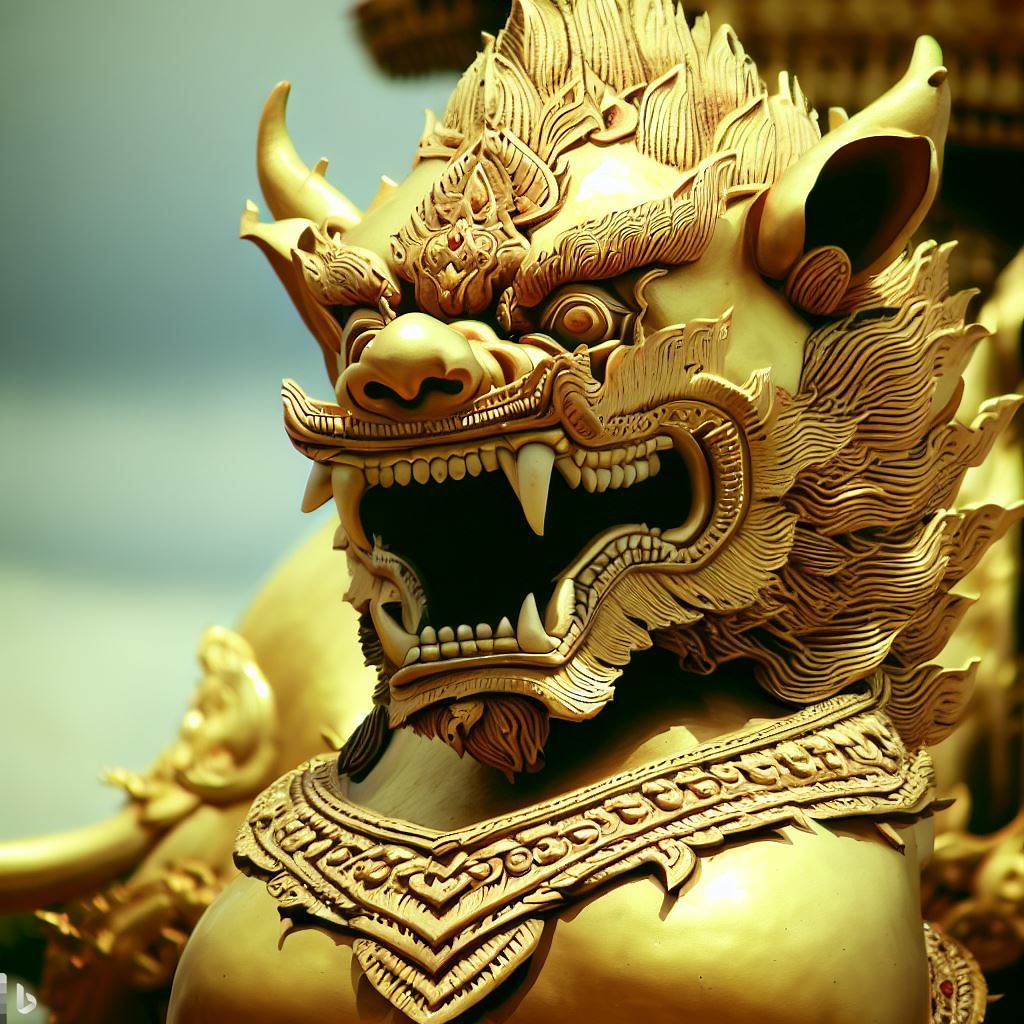
The Singha, or Singh, is a mythical lion creature that features extensively in Thai iconography. With a lion’s head, tusks, and mane, and the body of a human warrior, it represents power and ferocity.
In Buddhism, the Singha frequently appears as a protector of dharma, a law of righteousness. The Singha’s strength and courage make it a defensive guardian. It is often depicted guarding temple sites or statesmen’s thrones.
The Singha also appears on official emblems, flags, and the royally-endorsed Singha Beer company. This demonstrates its continued significance as a cultural symbol of Thai nationalism and heritage.
5. Hong
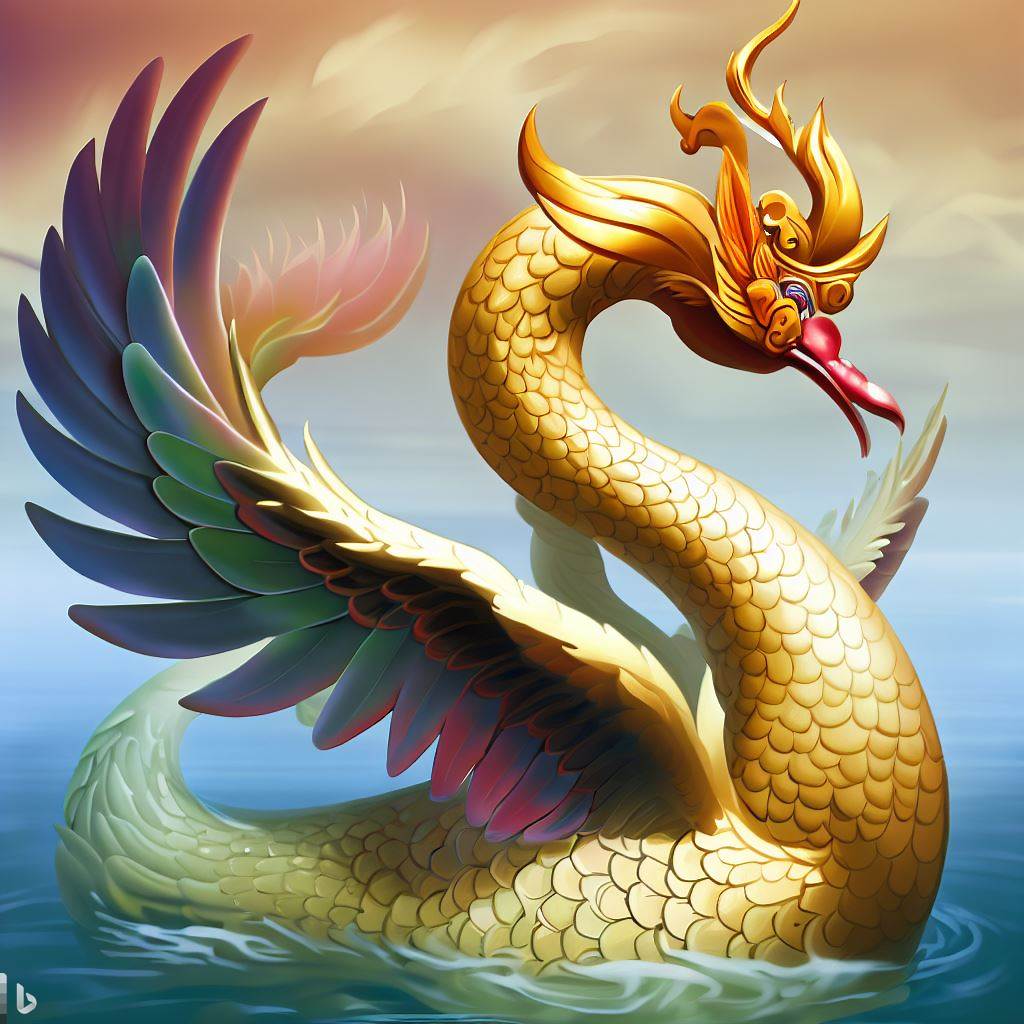
The Hong, or Hongsa, is a mythical swan creature that symbolizes elegance and refined grace. With red eyes, a snake-like neck, and melodious voice, it represents beauty in traditional Thai culture.
In Thailand’s Sukhothai era from the 13th-15th century, the Hong appeared in ancient literature and Thai architecture as an auspicious omen. Ceramic Hong sculptures reflected the period’s artisanship and Buddhist reverence for nature.
Today, the Hong’s fluid neck movements serve as inspiration for classical Thai dancers. The Hong Dance emphasizes gentle grace and slow, soft gestures like those of the mythical swan creature.
The Hong remains an endearing cultural icon representing Thailand’s creative heritage.
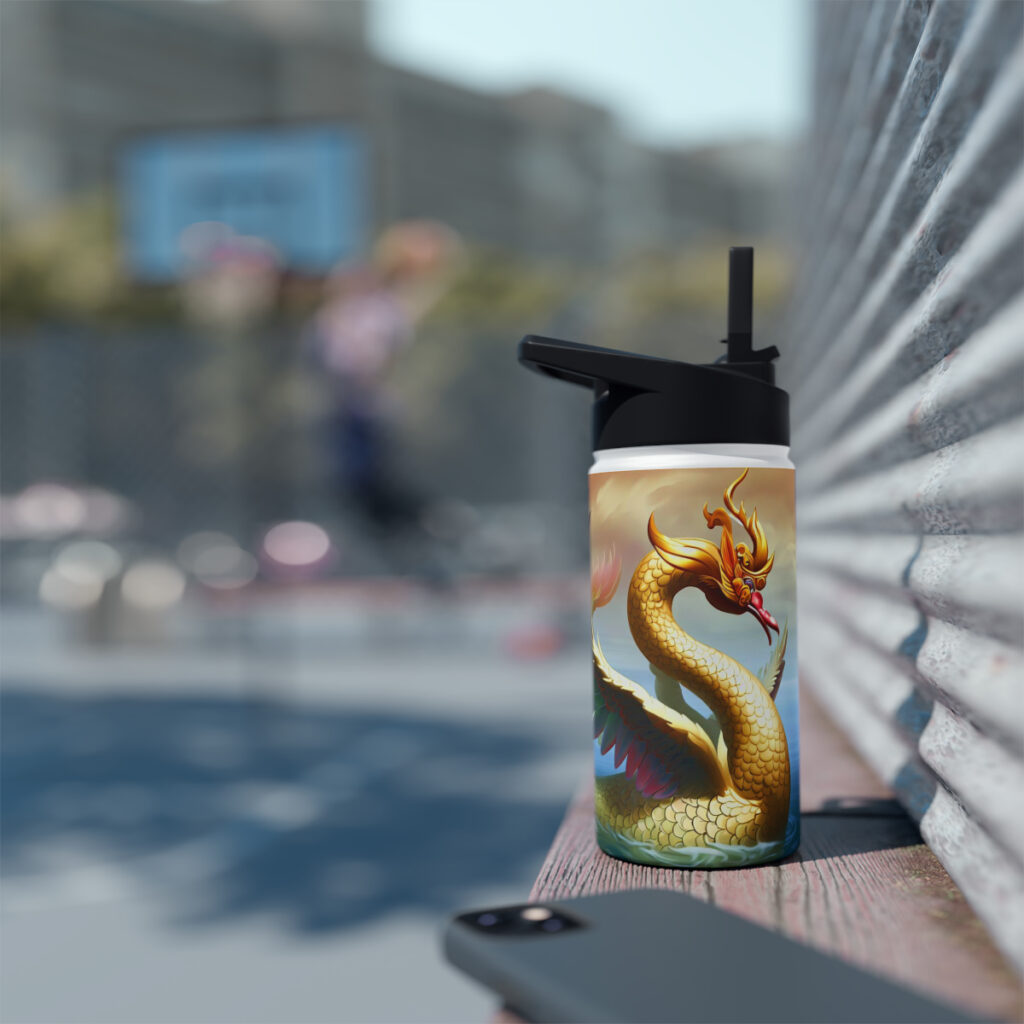
Hong Thai Mythical Swan Water Bottle
6. Khun Paen
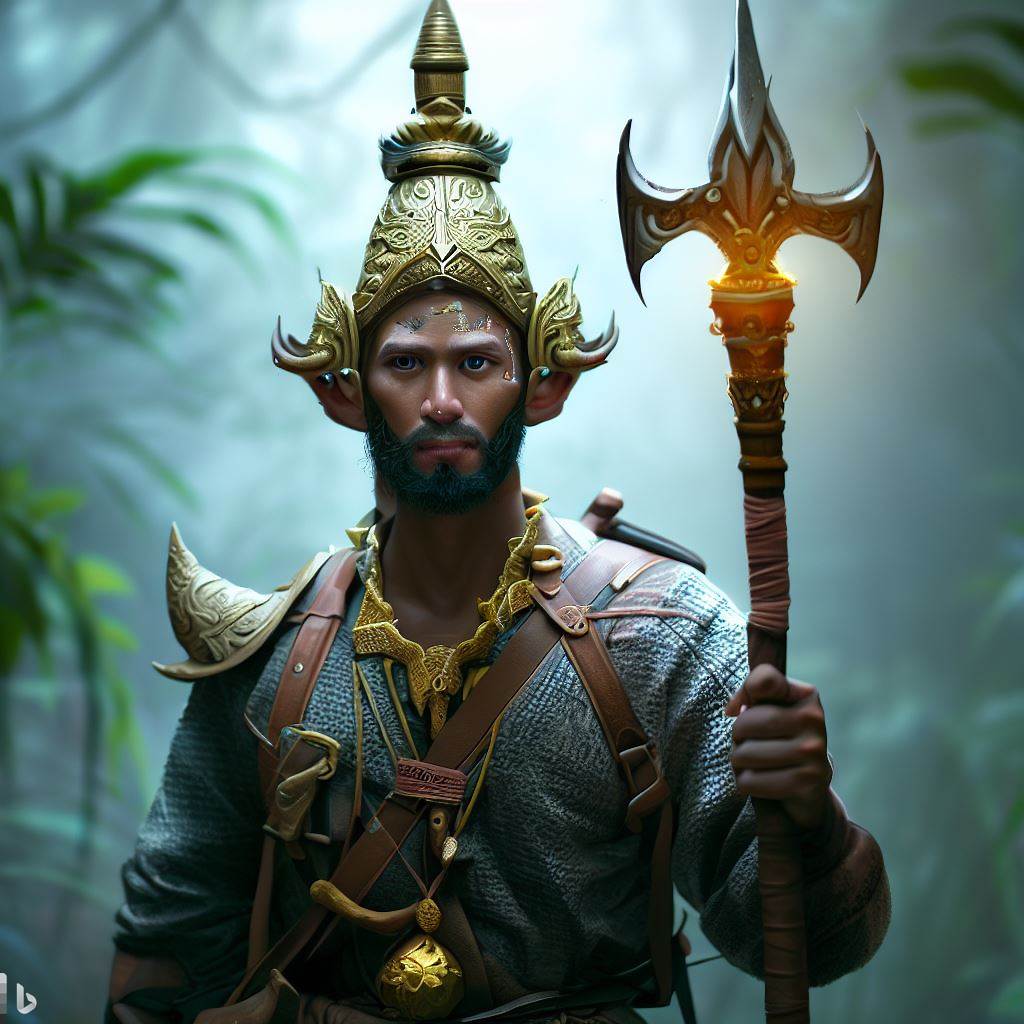
Khun Paen is a legendary Thai folk hero famed for his prowess in battle, swordsmanship, and mastery of magical herbs. This adventurer warrior wizard is the central figure of Thailand’s classic epic story Khun Chang Khun Paen.
In this folk tale, Khun Paen’s knowledge of sorcery and healing allows him to charm women and evade death. His character represents the ideal man—physically robust, courageous, and possessing skills of both war and intellect.
While fictional, Khun Paen reflects the values of historic Thai culture. His character embodied Thai ideals of manliness, honor, and virtuoso talent. Tales of his exploits highlight key themes of love, war, and magic that recur in local legends.
ads content
7. Phi Pop
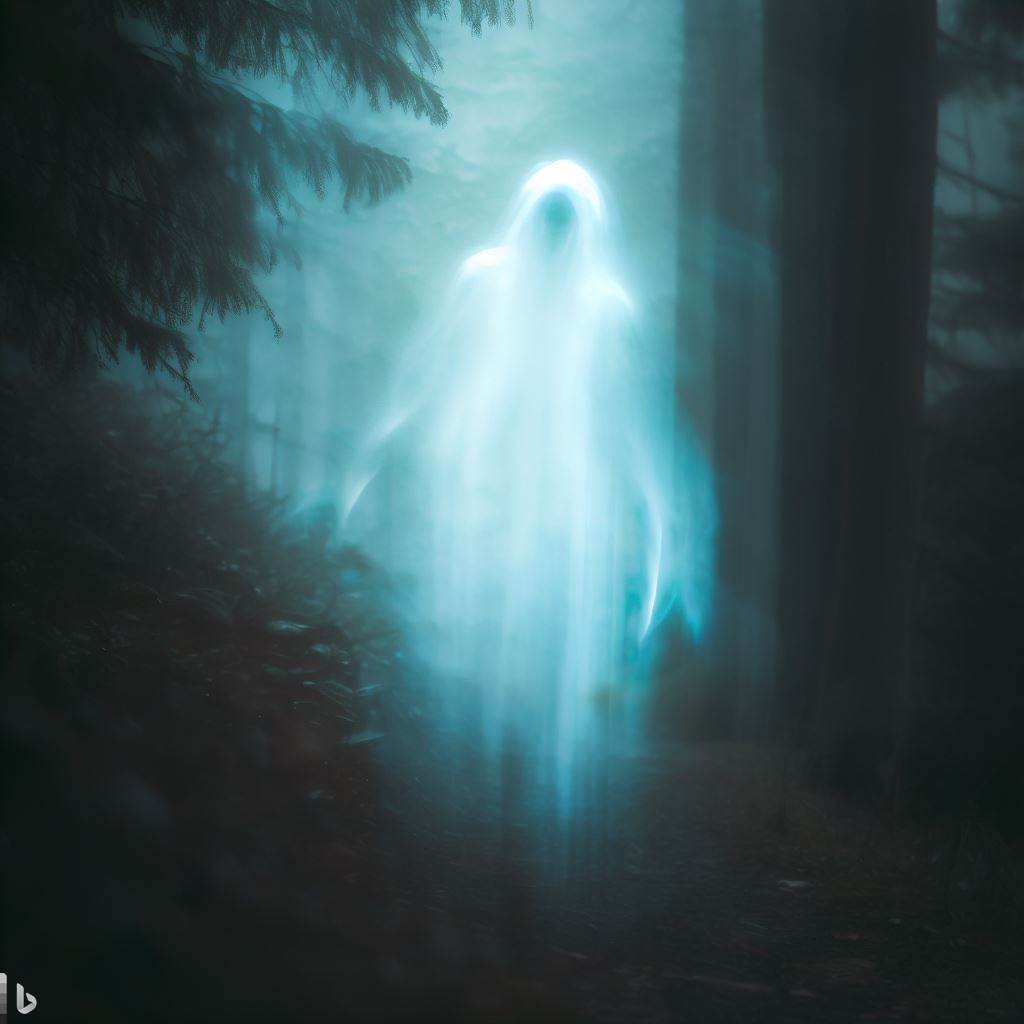
The Phi Pop is a well-known spirit in Thai folklore that inhabits jungles and forests. This mischievous ghost plays tricks on humans who wander into its forest domain.
Belief holds that Phi Pops prize and protect certain trees. To cut down these trees angers the Phi Pop and leads to bad luck or disaster.
Those who destroy forest areas may become lost, sick, or encounter a fierce tiger—the work of an affronted Phi Pop.
In this way, the legend of this jungle ghost teaches respect for nature. The Phi Pop discourages deforestation and damage to its wild habitat.
For locals, offerings to the Phi Pop bring good fortune in forest activities like foraging, hunting, or logging.
8. Phi Krahang

The Phi Krahang is a malevolent ghost known for draining the blood from humans and consuming their flesh. With vampire-like qualities, this ghoulish spirit is nocturnal and preys upon any humans wandering alone at night.
Myths warn that those who encounter the Phi Krahang fall under its hypnotic spell. The ghost then feeds on their blood or internal organs, leaving behind mutilated corpses.
Belief holds that only magic amulets and protective tattoos can ward off this murderous spirit. The Phi Krahang spawned ritual practices such as magic spells and herbal remedies to prevent ghostly attack.
As a folk legend, this gruesome ghost played an important role in cultural practices and Traditional Thai Medicine. Its lore lives on in horror stories and films depicting paranormal beings.
9. Phi Hua Kat
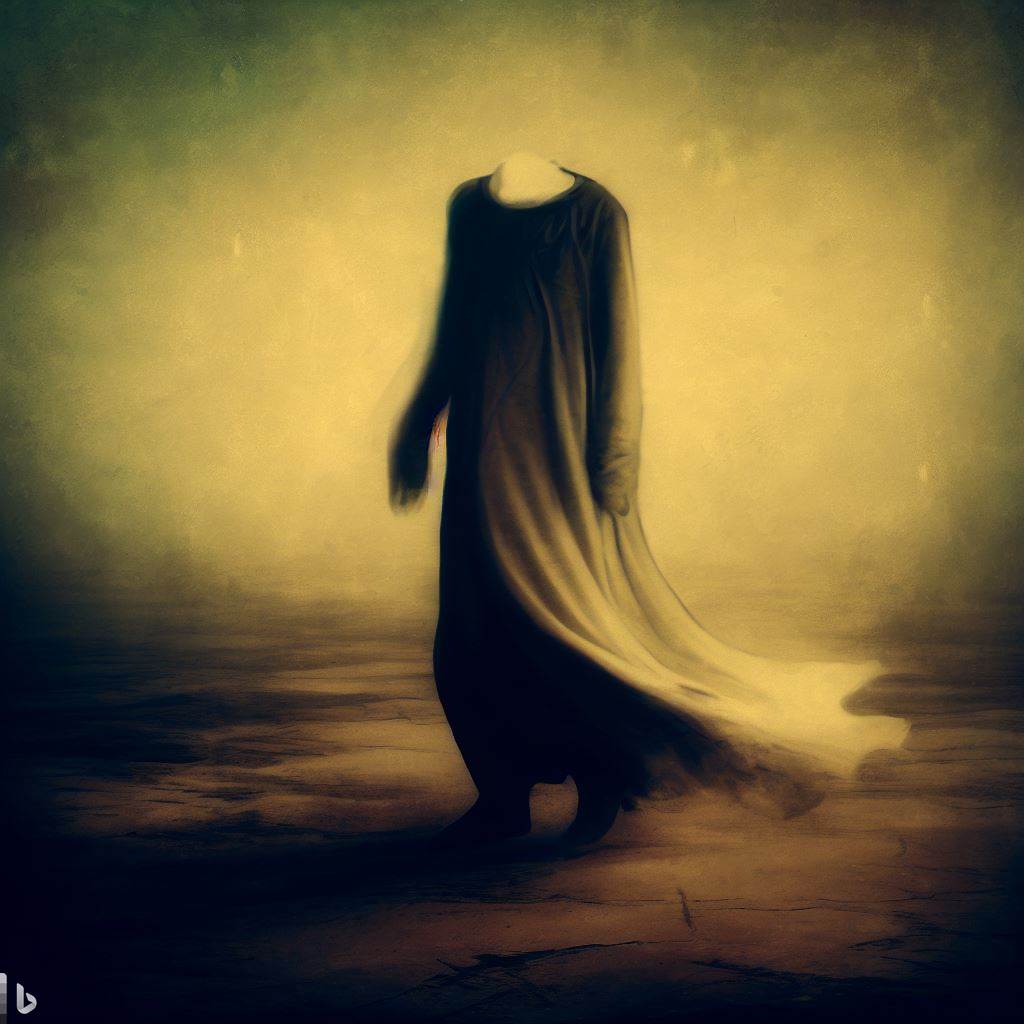
The Phi Hua Kat is a restless wandering ghost without a head. In Thai legend, this spirit is doomed to creep around headless as punishment for hiding Buddha images to avoid work.
According to myths, the Phi Hua Kat cannot reincarnate or find rest until it recovers its detached head. It roams ceaselessly searching for its missing head, often causing unease and terror.
Some stories claim the Phi Hua Kat reattaches its head by stealing heads from sleeping humans. Victims of the ghost then perish while their heads reanimate on the Phi Hua Kat’s shoulders.
The moral tale behind this creepy headless ghost discourages laziness and deceit. Locals blamed unexplained illness and bad fortune on the Phi Hua Kat’s influence. Rituals arose offering food and gifts to appease it.
10. Mae Nak Phra Khanong
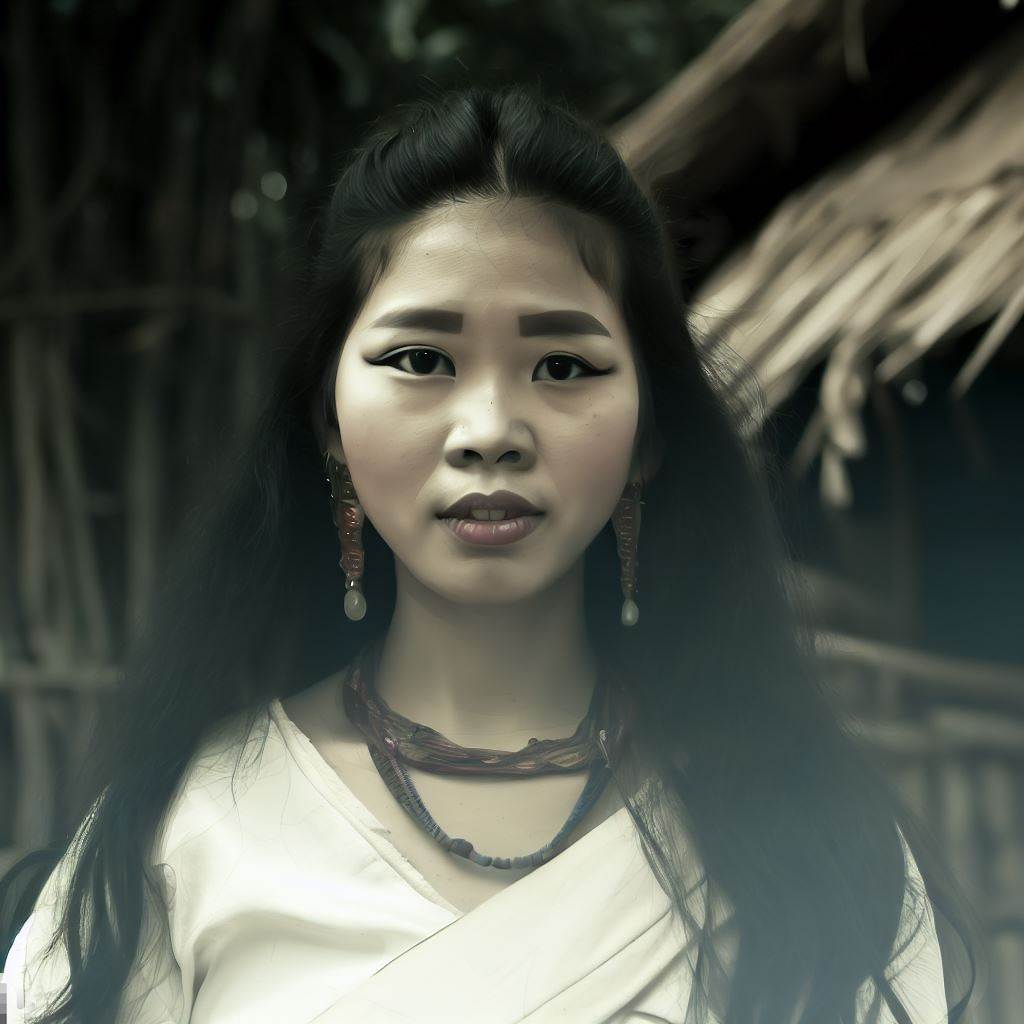
Mae Nak is Thailand’s most famous female ghost, appearing in literature, film, and daily lore. As the tale goes, she died in childbirth while her husband was away at war. When he returns unaware, her ghost continues living with him normally.
In versions of the legend, Mae Nak’s ghost terrifies villagers who try to tell the husband of his wife’s death. She also kills anyone threatening to separate their love.
Mae Nak’s ghost represents devotion and passionate love beyond death. Locals claim she still haunts those who disturb her shrine.Her legend remains iconic in Thailand. Mae Nak festivals celebrate her undying love through offerings and reenactments of her tale.
Frequently Asked Questions
- What is the most well-known Thai mythical creature? The Naga is likely the most iconic and recognized creature. It features extensively in art and architecture.
- Do Thai people today still believe in these creatures? While some of the legends have faded, Nagas and Garudas still hold significance in tradition and ritual. Practices like spirit offerings persist in rural areas.
- Where can I see these creatures depicted in Thai culture? Temples, palaces, and museums showcase these mythical figures in paintings, carvings, and dance costumes.
- Which Thai creature is known for its elegance and beauty? The Kinnari, a half-woman half-bird, epitomizes grace, music, and femininity in Thai tradition.
- Are any of these mythical creatures also found in other Asian cultures? The Garuda has its origins in Hindu lore and is a key figure across Southeast Asia. Meanwhile, the Naga appears in Buddhist mythology.
Conclusion
Thailand’s exotic collection of mythical creatures reveals a rich cultural heritage. These fantasy figures from folk tales and Buddhist legends continue to capture imaginations today. They embody timeless archetypes and moral lessons that provide a window into Thai beliefs.
From the venerated Naga serpent to the haunting Phi Hua Kat ghost, these myths populate temples, fables, and films.
The creatures highlighted here represent key icons of Thailand’s mystical past and lasting creative spirit. While beliefs have evolved, their artistic legacy remains integral to Thai identity.
Respect and appreciation for these mythical beings persist as enduring symbols of the culture.
